My recent article covered the cruise of the MS Kong Harald, The Coastal Express, sailing from Bergen to Kirkenes and back to Bergen. Since the ship had a long stay in Tromsø, there was a chance for Mrs B and me to go a few miles outside the town to visit the husky centre.
It had long been an ambition of ours to ride on a sledge hauled by a team of huskies. It was an experience we shall not forget, an exhilarating memory of Norway since the ride was out in the open country under deep snow with wonderful views of mountains and woods. We also love dogs, which for us was a major consideration.
The team
Our eight-dog sled was owned and led by Einár, a Sami of great character and experience. He is devoted to his dogs and they to him. He introduced us to his dogs and also showed us the brake or anchor on the sled. Huskies are enormously enthusiastic to get running and, without the anchor, might easily disappear over the horizon. With huskies, your anchor is also your trusty friend!
Finnmarksløpet
Einár, and his dogs compete in the Finnmarksløpet which includes both a 1200 and a 500-kilometre dog sled race, starting in Alta, crossing the Finnmark county of Norway as far as Kirkenes and then back to Alta. Around 160 dog sled teams compete in the Finnmarksløpet, with about half of those taking in the full 1200 kilometre race and the rest choosing the short (!) 500-kilometre race.
The long race requires a rotation of 14 dogs for each sled while the shorter race requires eight dogs
There are no stages and no stopping in the races apart from designated rest breaks. The winner completes the 1200 kilometre race in under five and a half days. When racing, the Alaskan husky requires 10,000 calories a day and, in the race, all dogs are always pulling.
In fact, the leader knows that a dog is in trouble if it ever stops pulling, in which case that dog is taken out of the harness to ride on the sledge under a blanket to the next checkpoint. The races are covered by full veterinary supervision but these amazing dogs are far too valuable to mistreat.
It would be good to say that Mrs B and I both took command of the sled and the dogs obeyed our every command. Nothing could have been further from the truth – which is that we were more than happy to sit in the sled, covered by a lovely warm blanket, more akin to out-of-sorts huskies riding to the next checkpoint than intrepid Arctic adventurers.
The Husky Sled Centre
After our sled ride, we toured the sledding centre itself which is home to hundreds of huskies, sleds and all their associated equipment. This gave us an unrivalled chance to get close to as many huskies as desired. Since they are all born and reared in close human contact, they are invariably friendly and can be petted at will. Dog lovers will appreciate the thrill of this experience, others perhaps less so!
It is notable that all the dogs spend ten months of the year working, going out for regular sled hauling excursions for tourists and visitors, or racing, and the other two months of the year resting at the centre without any major exercise. This is a time of recuperation but there is no doubt that a husky is at his/her happiest when hauling a sled at breakneck speed through the woods and over the snowy ridges and hill plateaus.
The Sami People
The Sami (or Saami) are an indigenous people of northern Europe who live in parts of northern Sweden, northern Norway, northern Finland and Russia’s Kola Peninsula. The Sami language is part of the Uralic group, alongside Finnish, Estonian, Hungarian and 34 others.
In Norway, reindeer herding and farming are reserved exclusively for the Sami. Politically, the Sami have had a tough history of being neglected and overrun, not least in the devastation of the far north by the Nazis during the Second World War.
However, the Sami lot is slowly improving. By 1996 there were Sami parliaments in Norway, Finland and Sweden. Then, in 2008, the Kola Saami Assembly was established in Murmansk but, unsurprisingly, in Russia, it falls even further short of a proper parliament than the parliaments in the other three countries. It is however encouraging that all four countries with a Sami population are now at long last recognising their proper political, cultural and economic needs.

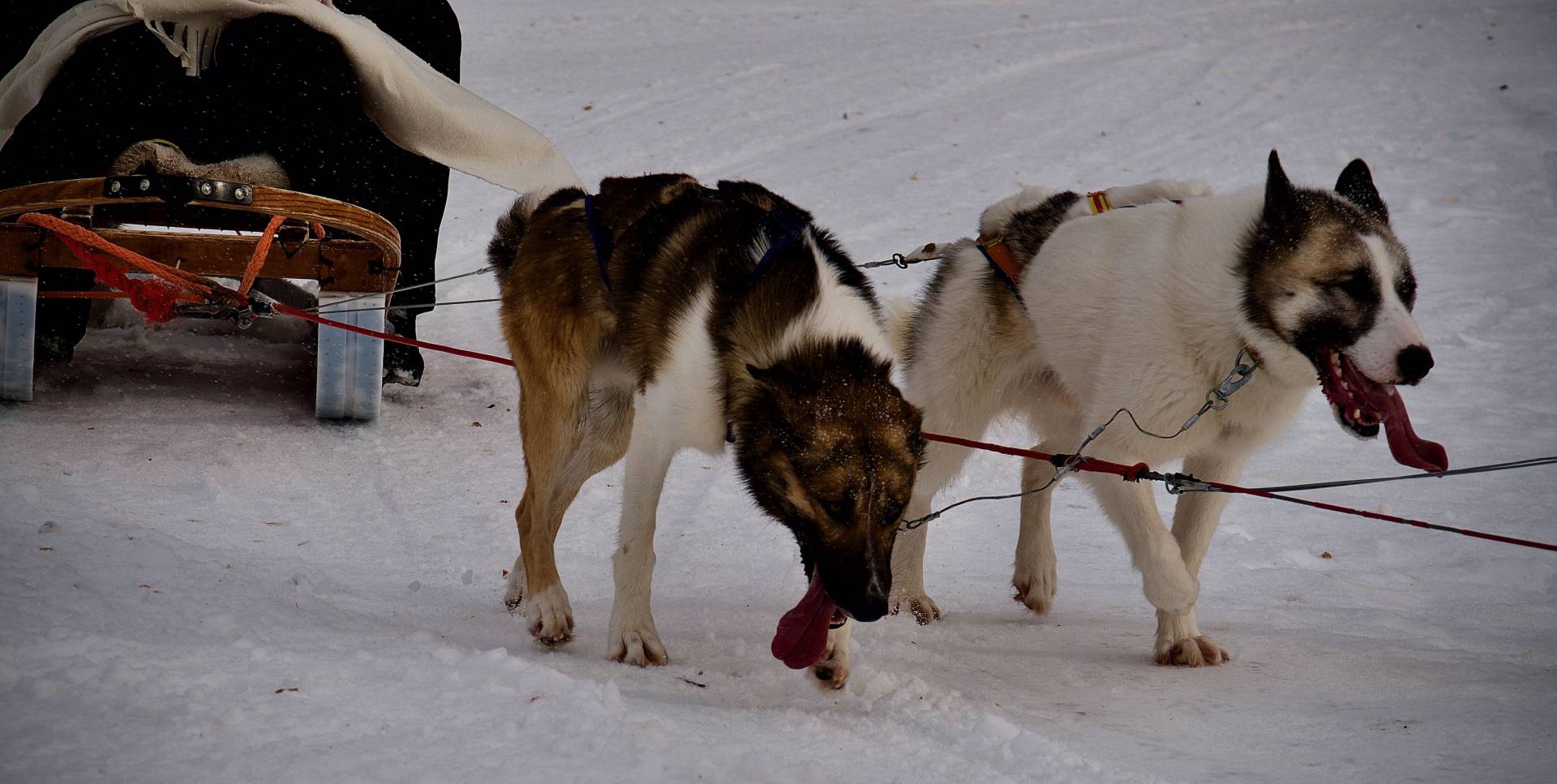
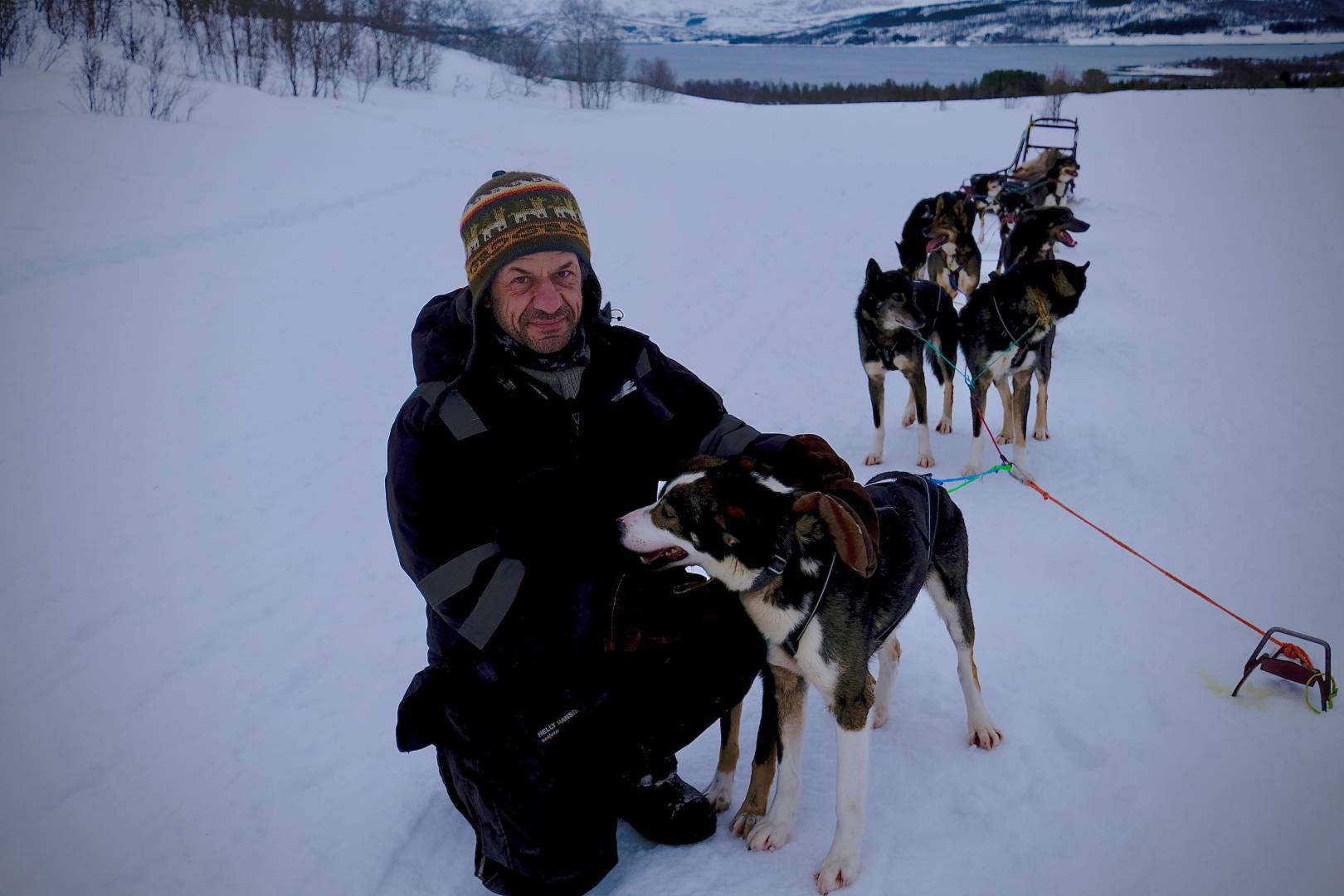
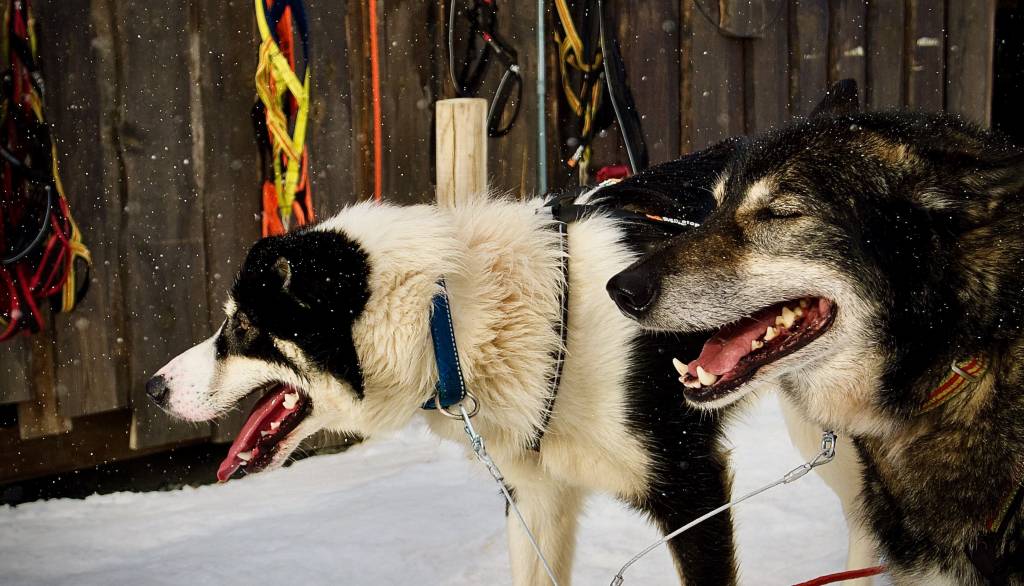
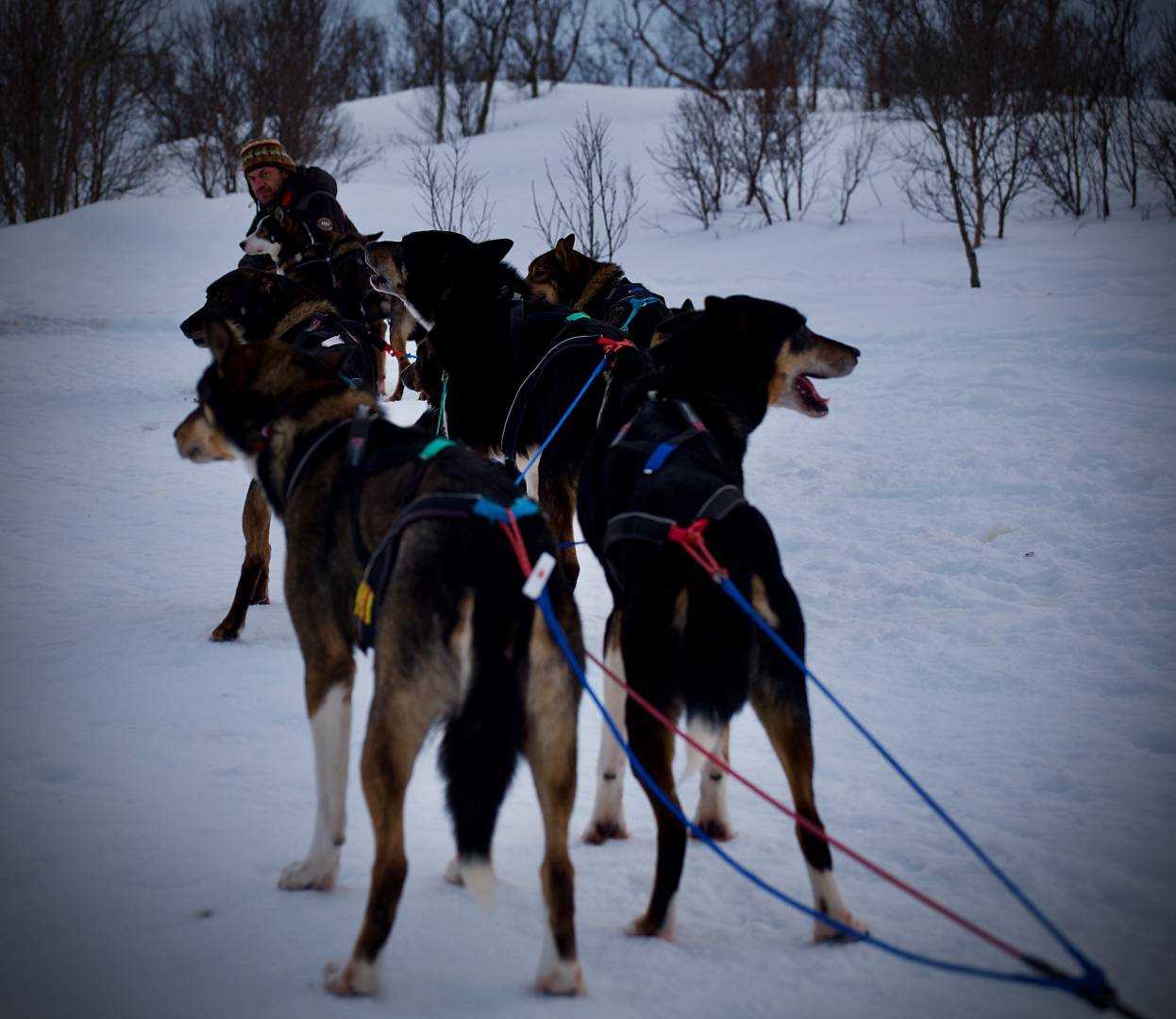
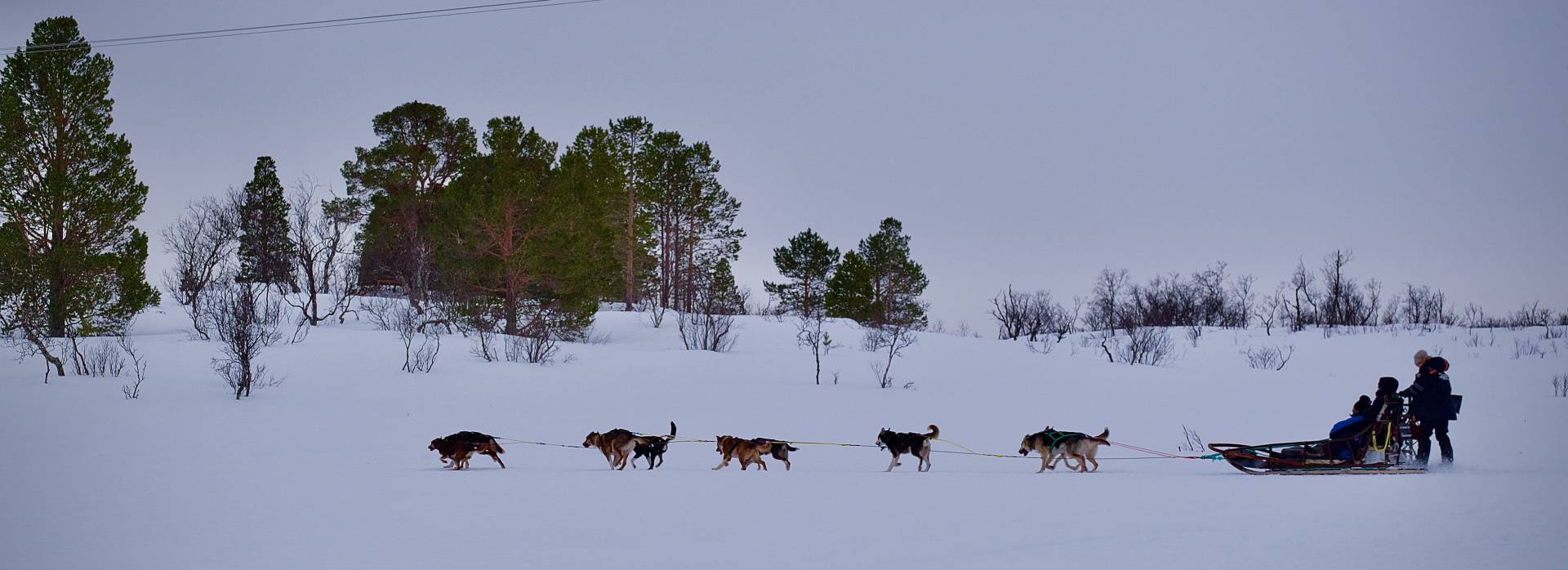
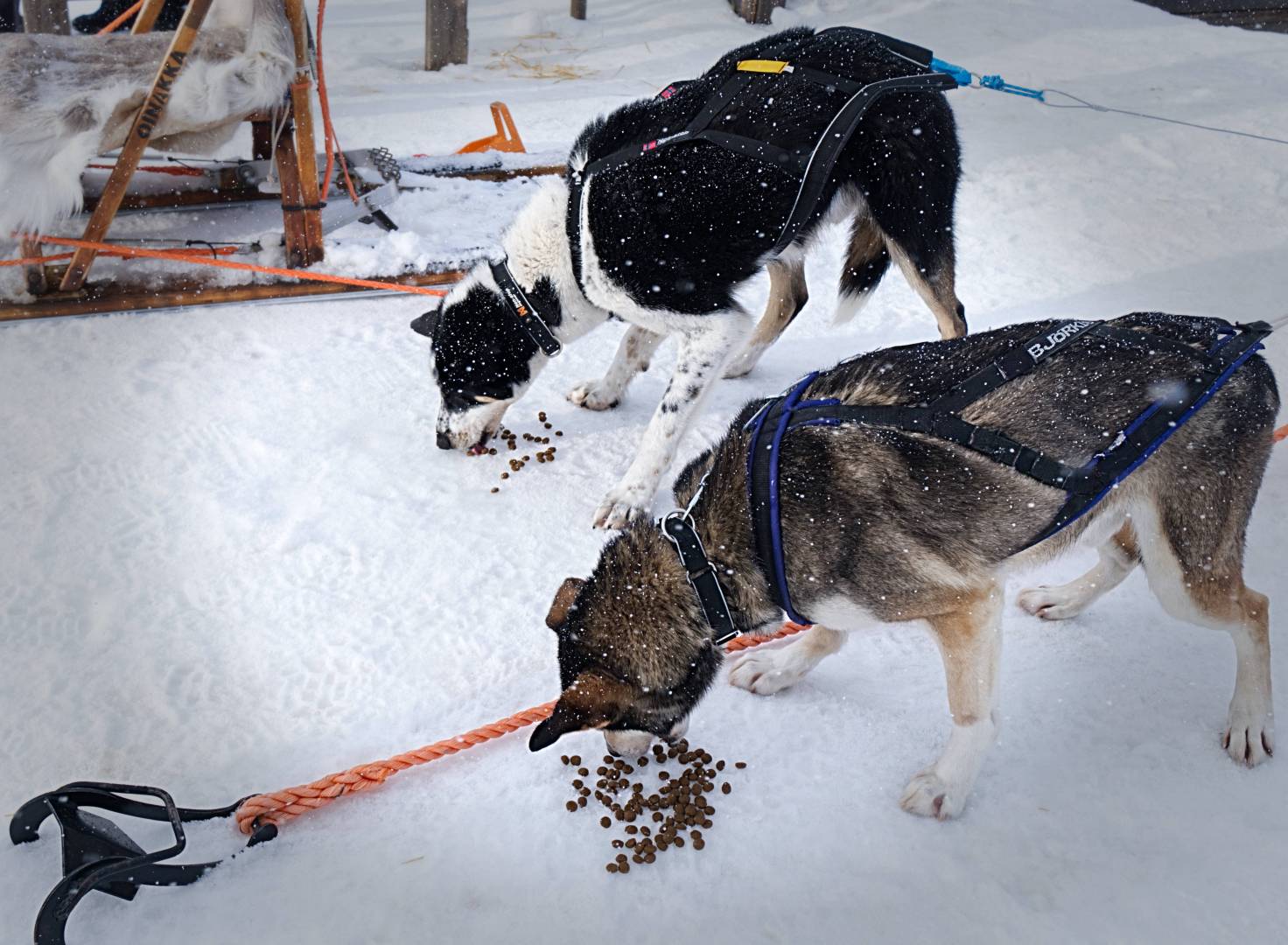
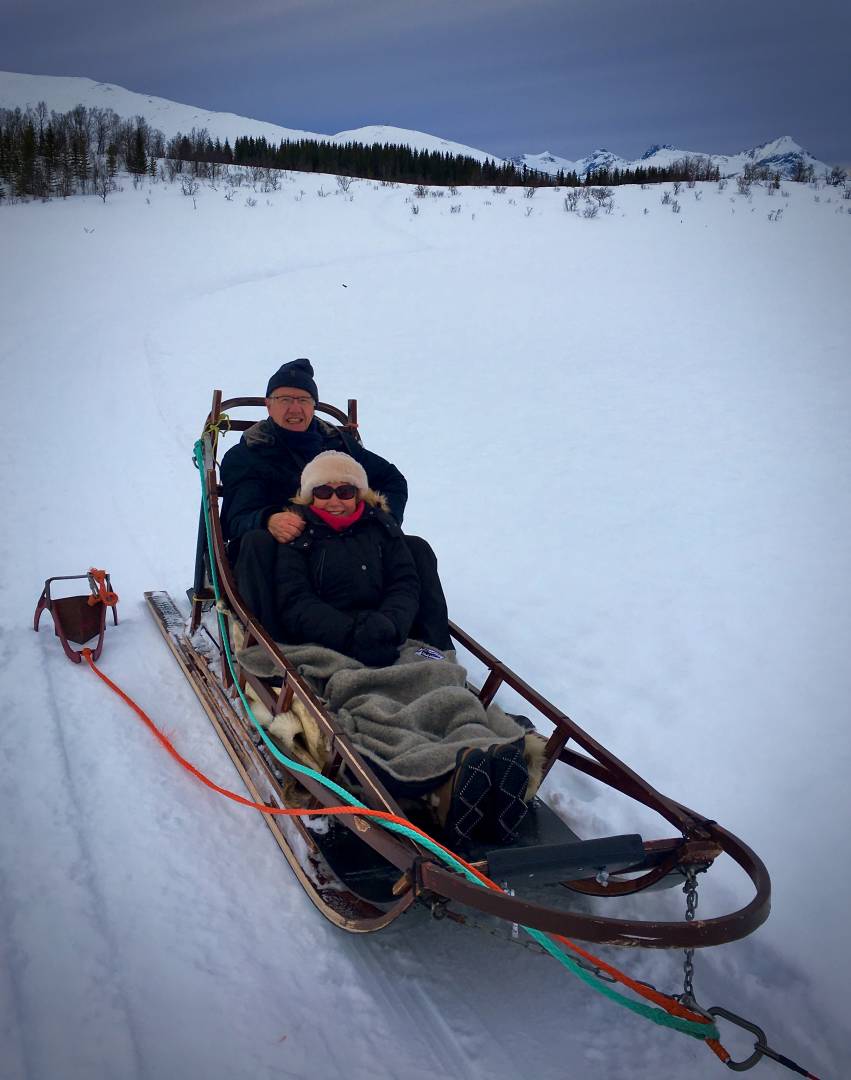
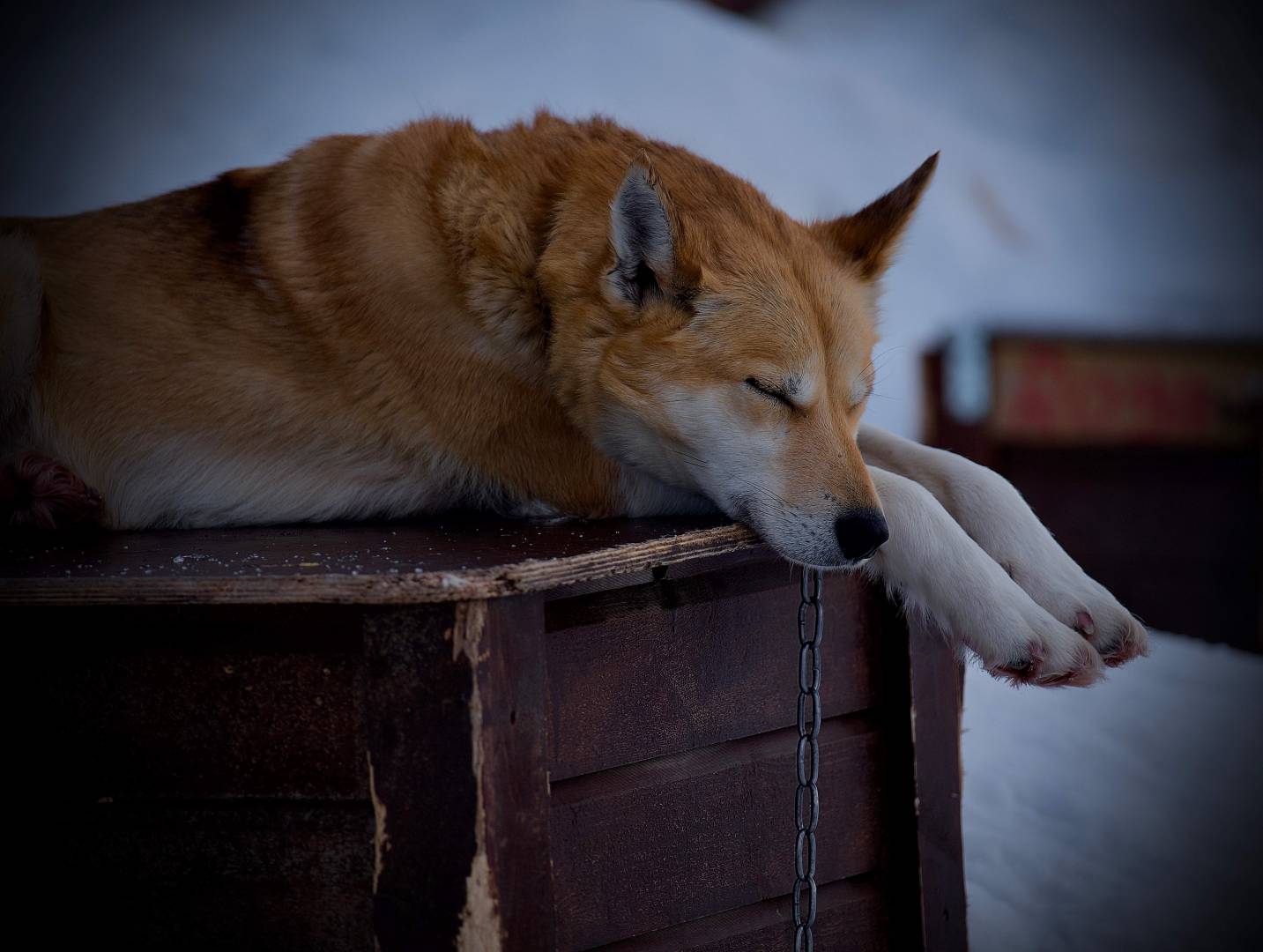
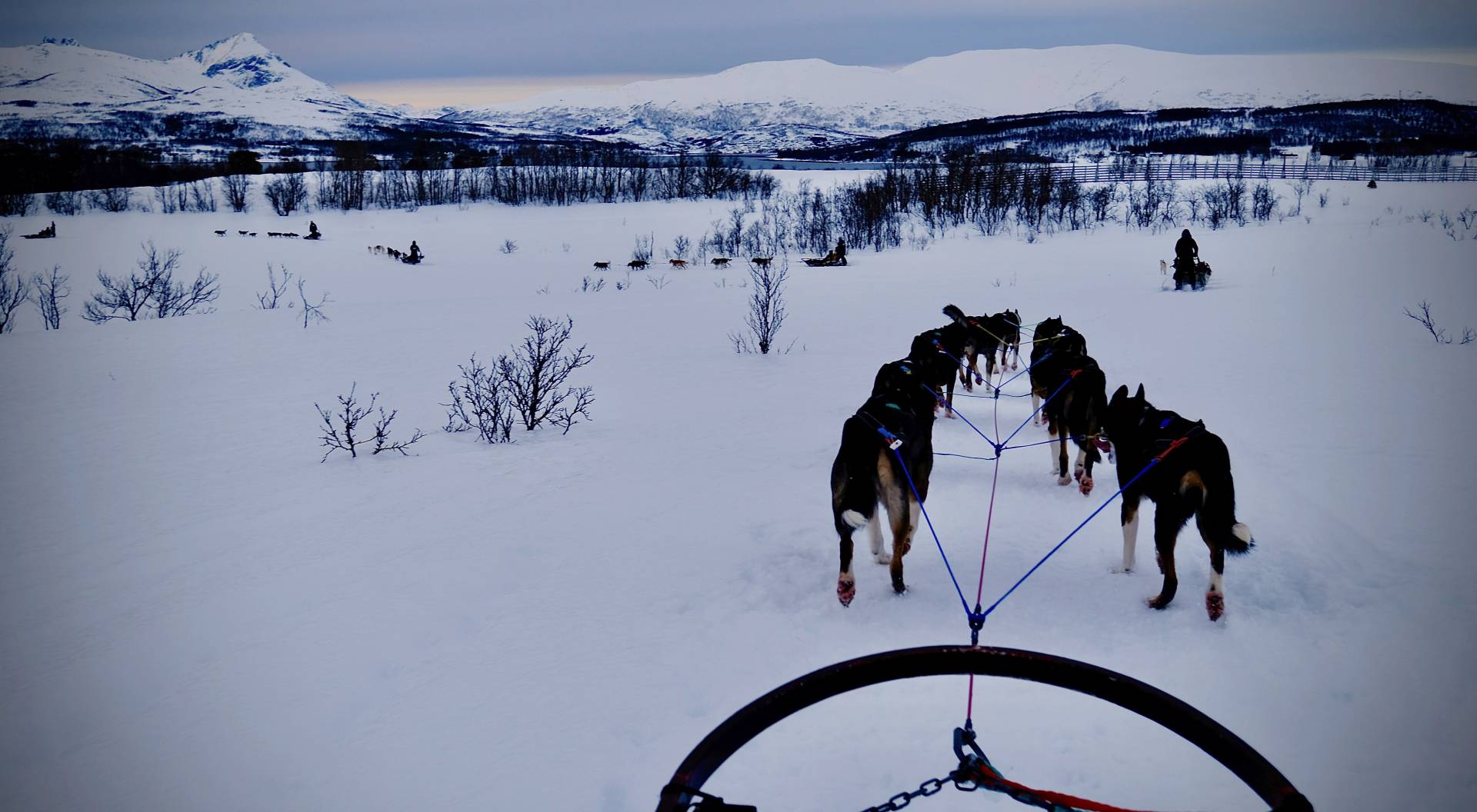
What a wonderful story and set of images. It brings back some fond memories for me. There’s a remarkable similarity between the scenery you captured and Canada in the winter.
There was a time when I would (and often did) try any outdoor winter sport, but I’m afraid I’m a bit past that now. As I get older, I am coming to appreciate the creature comforts. Kudos to you for braving the frost and wind!
Thank you Richard. I am sure husky sledge racing is very big in Canada with some epic challenges for man and dog!
I would like to claim we braved the frost and wind in Norway but really we were warmly wrapped passengers on a sledge while the musher and dogs did the work. Very enjoyable and an experience we’ve always wanted.
Wow that looks amazing fun, I could just imaging sitting on that large sled with the cold wind whistling through my hair (or whats left anyhow).
Your images capture the centre and surroundings well, I certainly enjoyed just flicking back and forth through them.
Glad you enjoyed the pictures, Dave. When at speed , it is hard to obtain any image at all since the sledge bucks and jumps over the icy ground. It was better ti wait for slow sections and the odd stop.It was definitely a memorable experience.
Hi David – excellent shots, especially the ‘sleeping husky.’ We are booked to go again on our ‘Northern Lights promise’ in Oct. Which I think is a tad optimistic, but we had to book within 28 days of arriving back here in March. However, your pictures have convinced me to go on that Husky excusion.
Pleased you liked the article, Jack . I will keep my fingers crossed for your voyage in October which will be a something to anticipate. I am sure you will much enjoy the sledge ride for the snow, the countryside and the wonderful views as well as the drama of it all.
Lovely story, very well illustrated. The Sami people seem to be wonderful at adapting to their harsh environment. They seem to be very much the ‘Bedouin of the North’ with reindeer instead of camels. In that cold weather an Aquavit or a Vodka might have gone down very well afterwards.
William
Thank you William. It was a stiff Gin and Tonic! Drinks were very expensive on board, indeed anywhere in Norway, but we had our own stash of Gin and tonic in our cabin.
Good point about the Sami people and their animals being adapted to the cold. We were glad to get back to the boat after only about three hours outside on the sledge ride and with the huskies in the centre. (And Mrs B and I are tough Northerners unlike soft Southerners like Mike – oops! sorry I forgot he is from Lancashire but you know what I mean)
May the ‘Curse of Wigan’ be upon you. Mike is a true Northerner, who is well adapted to Capital City living. It is the same over here. I often have to rely on the fact that my mother came from Cork when I visit there, so I know the feeling. Over here, people who come from Dublin are called ‘Jackeens’, implying that they might be half English, and for Dublin people, folk from the rest of the country are called ‘Culchies’, implying that they might have mud on their boots.
William
William
Lovely photos David and an interesting story, thanks. It’s good to see the dogs happy and in such a healthy condition.
Glad you enjoyed the article, Kevin. Yes, the huskies want to run, run and run some more which is pure happiness to them. However, in order to do that they have to be ultra well fed and well cared for or they could not deliver the performance they do. Handlers have to treat then as their family and give them every possible help. There were literally hundreds of dogs at the centre and all were in top condition but burning with desire to haul a sledge!!
A wonderful article and images and most welcome in these confined times. Was there a traffic-jam on the last image? Hope you’re enjoying your brand new XT 4. Great images you can pull out of your Fuji gear. Thanks for sharing and stay safe
Jean
Thank you, Jean. I was a bit worried that our interest in dogs and dog-sledding would not be shared by others. It was fascinating and thrilling but inevitably we weren’t the only sledge going out! You’re quite right that in the last image you can see the five sledges ahead of us. Sometimes we could see no other sledges which was the best but inevitably at other points there was some bunching up. I could have photoshopped them out but that would have been wrong!
I am revelling in my XT4 but desperate for the freedom to get out and use it properly which hopefully is in the process of arriving. I aim to do a proper field test on it in due course and report back.
I meant to have commented on your previous article. Thank you for both – superb record of your journey with “Hurtigruten” (silent “g” to those who don’t know!). I am so glad you have experienced that wonderful journey from Bergen and back again. My wife and I didn’t manage a sled ride but returned nevertheless satiated with so many impressions of that sea and coastline. My photographic company was the little Leica C – with “through window” setting, invaluable for bus journeys – and the V-lux 1 with its superb internal focussing and zooming lens for things that would otherwise have been too far away !
Great to know that you enjoyed your Hurtigruten voyage as much as we did. It was one of those holidays that genuinely did deliver everything we’d hoped and a whole lot more besides. We would definitely go again if ever the chance arose.
I know very little about Leica gear, I shamefully confess on this blog, but am confident you would have more than matched my efforts whatever you took along.
So next on your bucket list Alaska Iditarod? I admire the people and the dogs who can accomplish these feats. That had to be a real blast for you and MRS. I envy you. Thank you
Thanks, John. The Iditarod 1200 mile race would be quite beyond us even if somehow we could do it as warmly wrapped passengers! I have no idea how the teams do it.